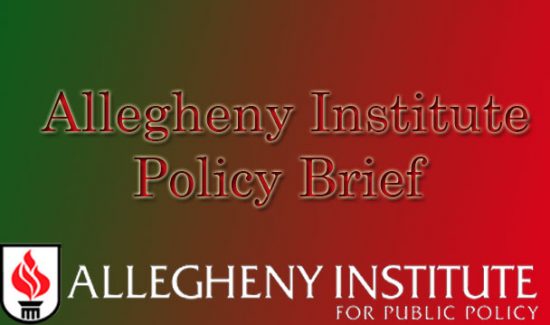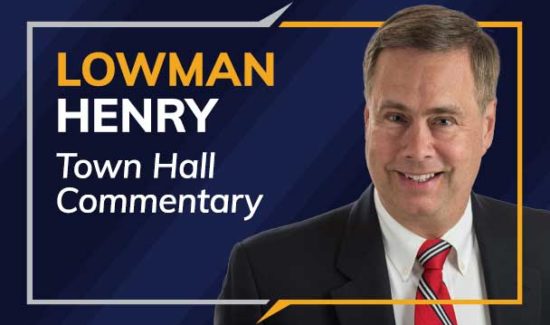Minimum Wage Side Show
(May 8, 2014)–Much like the magician whose stock in trade is misdirection so the audience does not see what he is really up to, the current political push for higher minimum wages is largely aimed at taking the public’s attention away from the abysmal failure of the economic policies currently in place.
In April, the unemployment rate for 16 to 19 year olds was 19 percent; the unemployment rate for 20 to 24 year olds was 12.8 percent. Certainly these figures are bad for these young people. But that is not the whole story. The great untold story of the last several years has been the precipitous decline in labor force participation for these age groups.
If the participation rates of a decade ago were still in place, the 16 to 19 year old age group would have two million more labor force participants than it does now and, assuming the same number would be working as are employed today, the unemployment rate for teenagers would be 40 percent instead of 19. And using the same calculation for the 20 to 24 year olds, i.e., using the decade earlier participation rate, their unemployment rate would be 19 percent instead of 12.8 percent. And while data are not available to perform these types of calculations for the state or regional employment and labor force, it is very likely that similar dynamic changes have been occurring in the Pittsburgh metro area, although perhaps not as dramatically as the nation as whole.
There can be many reasons for the declining participation rate of young people over the last six years, but the most likely has been the discouragement in finding work. After all, the total number of people working in the U.S. has yet to return to the pre-recession level reached in 2008. Moreover, private sector payroll jobs did not reach the 2008 level until March of 2014. Indeed, in 2010, the job count was lower than the count from six years earlier, the first time since WWII that has happened. And what’s worse, employment remained below the six year prior reading in 2011, 2012 and 2013. In a country with a growing population of working age people that is a disaster for those seeking work.
This analysis does not address the large mismatch between skills needed for jobs and those possessed by many unsuccessful jobs seekers, nor does it address the difficulty employers have in finding suitable employees where the jobs require employees to be free of substances that can hamper the ability of an employee to function in a safe or careful manner. Nor does it try to assess the impact of extended unemployment benefits, easier access to food stamps and other welfare benefits on the willingness or need to work. Is it merely a coincidence that private employment has picked up in the first quarter of this year following the end of the extended unemployment benefits program in December of 2013, or that over a million more people reported themselves as being employed in April compared to the December 2013 figure?
And while these considerations are almost certainly factors affecting labor force dropouts, there are others that are clearly just as, or even more important; namely, policies that inhibit economic growth. But rather than having policies put in place that would actually encourage entrepreneurism, business startups and market driven output and employment gains, the country has been subjected to an unprecedented enlargement of regulations affecting businesses including the Affordable Care Act, the EPA and the National Labor Relations Board, among the panoply of alphabet agencies.
Meanwhile, the Brookings Institution just reported that in the last few years the number of firms going out of business have moved above the number of new entrants. There can be little doubt that the decades’ long increases in regulations and the costs they impose reached a crescendo in the last few years. How else to explain the stubborn persistence of economic weakness that is beyond anything experienced since the Great Depression? Not even the stagnation of the 1970s or the painful early 1980s that resulted from draconian efforts to stop the galloping inflation of the late 1970s comes close to the last six years of economic sluggishness. Thus, despite (or perhaps because of) the most prolonged period of extreme monetary stimulus along with massive deficit spending, the economy has simply been unable to gather enough steam to get close to eliminating the gap between GDP and its decades long term trend level.
But instead of introducing policies that would boost employment growth and productivity gains that lead to higher worker incomes, we see ever more intense efforts to redistribute incomes. And that is precisely what the minimum wage hike argument is about. Forcing companies to pay wages above the value produced by the workers is, in effect, a tax that must be absorbed as lost income for the firm or passed on in higher prices. If prices cannot be raised and the firm’s profitably falls, the owner can make any number of adjustments including cutting hours and trying to get more work out of those employees who remain or reduce non-wage compensation. And if that isn’t enough, the business might have to close its doors. And what does the business tell workers who now make a few dollars more than the current minimum wage when the proposed minimum of $10 per hour, if enacted, makes them minimum wage earners?
Raising the mandatory wage rate at a time of such extraordinary labor market weakness, especially for the young and inexperienced who account for a large share of the minimum wage earners, is the worst possible policy idea currently on the table—and there are many bad ones.
And consider how ironic it is that the desire to improve the middle class’s income by mandating higher minimum wages would take money away from many middle class business owners who may well be struggling financially themselves.
Jake Haulk, Ph.D., President
If you wish to support our efforts please consider becoming a donor to the Allegheny Institute.The Allegheny Institute is a 501(c)(3) non-profit organization and all contributions are tax deductible.Please mail your contribution to:
The Allegheny Institute
305 Mt. Lebanon Boulevard
Suite 208
Pittsburgh, PA15234
For more on this topic click here
Link to Allegheny Institute Website
Forward this Brief to a friend
Tel: (412) 440-0079
Fax: (412) 440-0085
Email: [email protected]




